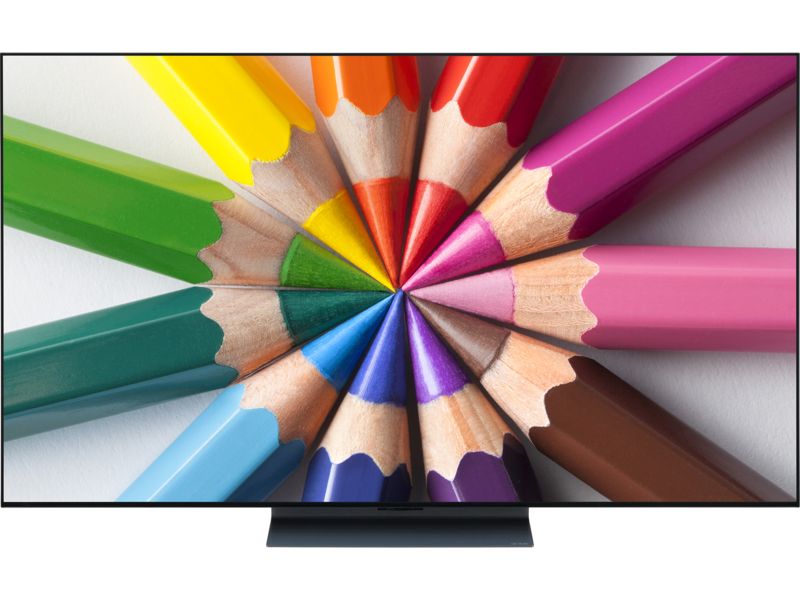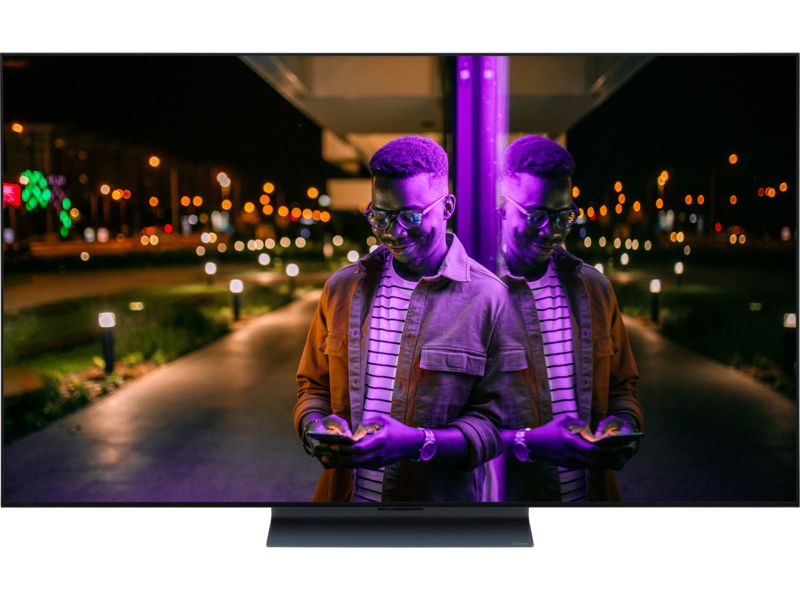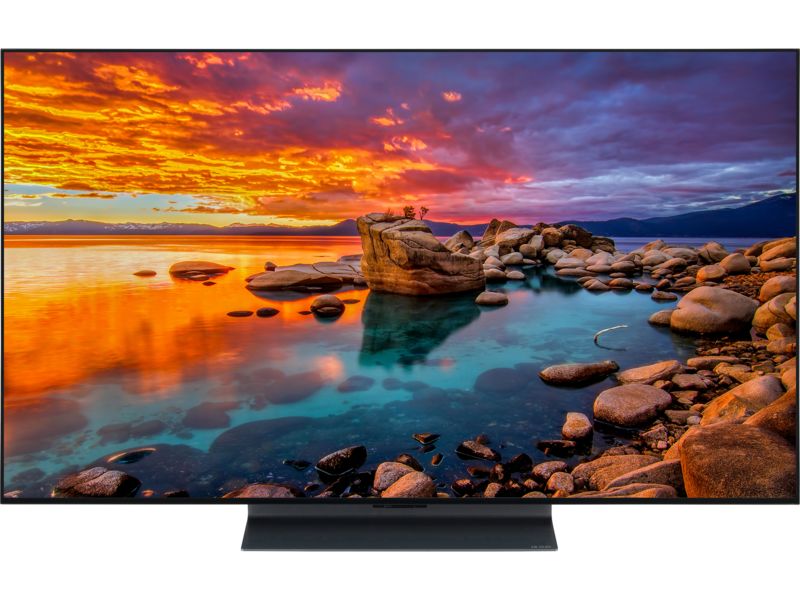How we test TVs

Our rigorous TV testing involves hundreds of independent checks, measurements and assessments in the Which? test lab.
To level the playing field, we ignore price so you can be sure that regardless of your budget, you’ll find the quality you’re looking for.
Video: what makes a Best Buy TV?
Why our TV tests are different
While many websites assess TVs based on an individual's preferences, we use teams of trained experts with decades of experience to test hundreds of models every year.
We don't accept TVs from manufacturers. We buy from the shop just like you, so we aren't beholden to brands or PR representatives.
All our reviews are based on numerous tests and the expert assessments made by our technicians in a lab.
Tech tips you can trust – get our free Tech newsletter for advice, news, deals and stuff the manuals don’t tell you
What are Which? Best Buys and Don't Buys
A Best Buy TV has our seal of approval, and you can buy it with confidence knowing that your money is being spent on the right product. It will look and sound superb, and be simple to use.
A Don't Buy is a model to steer well clear of. It's everything a Best Buy isn't: fiddly to use, a chore to watch and a pain to listen to.
- All TVs with a score of 71% or more are Best Buy TVs.
- All TVs with a score of 45% or less are Don't Buy TVs.
What is a Great Value TV?
To get a Great Value badge from us a TV needs to score at least 65% and cost less than most other models.
Since TVs come in several different sizes we treat each bracket differently.
So when we check the average prices of TVs we don't include the cost of a 65-inch TV when we're determining what price constitutes a Great Value 43-inch TV.
The size brackets are:
- 24 to 32-inch TV
- 40 to 43-inch TV
- 48 to 50-inch TV
- 55 to 58-inch TV
- 65 to 75-inch TV
Seeing a Great Value badge on a TV guarantees that it's good enough to consider buying and it costs less than most other TVs of similar quality.
Great Value TVs can also be Best Buys, but don't have to be. A TV needs a score of 71% or above to be a Best Buy, while a Great Value TV needs to score at least 65%.
How is the Which? score calculated?
All these tests are used to create a final, overall score for each TV, and are never based on price. Every year we tweak and refine our evaluation, based not only on changes in the market and emerging technologies, but also on what you tell us about your TV. We constantly survey consumers to see what they look for and how they use their TVs.
We perform more than 300 tests on each TV, and each unique result is factored into each star rating you see on the review, making it easy to compare two or more models side by side.
- 45% - picture quality
- 25% - sound quality
- 10% - ease of use
- 10% - smart features
- 5% - connections and tuners
- 5% - running costs
TV picture quality
Key question: does the TV do a good job of displaying detail, vibrant, realistic colours and balanced contrast at all resolutions?
TV picture quality can be a subjective thing. Some people like warm, bright colours, while others prefer cool, crisp images. We can't completely banish our in-built preference for one kind of picture over another, but at Which? we get around this by using not just one person's opinion – we use five.
We watch blockbuster movies just like the ones you get at home – our TV test lab is full of flickering images of Ben Affleck, Jim Carrey and Dwayne ‘The Rock’ Johnson. But using their years of industry knowledge, our experts handpick scenes that push TVs to the limit of their abilities, using bright and dark scenes that test contrast, colour balance and sharpness.
While many manufacturers tout stunning 4K Ultra HD pictures, our own research shows most people still watch mainly HD TV. That’s why we test TVs using the full range of definitions and inputs. Not only do we have scores for the 4K HDR picture quality, but also HD and even SD. Our testing is not about falling foul of hype, but simply reflecting how you use your TV at home.
Alongside our viewing-panel tests, we run a range of technical assessments of picture quality covering aspects such as viewing angle and panel luminance.
The picture-quality tests make up 45% of the score.TV sound quality
Key question: does the TV balance bass, mid-range and treble tones, and is dialogue clear?
As TVs get thinner and thinner, manufacturers struggle to make speakers that are small enough but still sound great. Our tests have uncovered a huge disparity in sound quality across all flatscreen TVs – while some could rival a sound bar, others are downright dreadful.
We use three expert listeners, each with an extensive background in audio reproduction or live music, to assess the sound of each TV. From classical music to TV dramas with actors speaking over background noise, we cover every audio base to give you the ultimate verdict on TV sound quality.
Sound quality accounts for 25% of the overall score.TV ease of use
Key question: is the remote easy to use, and are the menus intuitive?
Whether you’re simply tweaking the picture settings or scouring the electronic programme guide, your TV should be a breeze to use. There’s nothing more frustrating than a sluggish TV that’s slow to respond, or a fiddly remote, when all you want to do is watch your favourite show.
That’s why we use ergonomics experts to test every TV for how easy they are to use. They run through different scenarios that replicate a user's experience, from getting your new TV out of the box to day-to-day use. We even test how easy each TV is to use without the remote, in case you lose it down the side of the sofa.
Ease of use accounts for 10% of the overall score.
TV smart features
Key question: are the most popular streaming apps available, and are they easy to find and download?
For many, catching up with the shows you missed on BBC iPlayer has become a daily occurrence. So it’s essential that a smart TV can handle these tasks as easily as it does traditional broadcast TV.
Our experts assess the layout of the smart menu, judging how quick and easy it is to navigate. We also find out if you can customise it with your favourite apps and services, and delete those you don’t use.
Smart features account for 10% of the overall score.TV internet security
With any internet-connected device, security is paramount, so we look at what data your TV collects and where it goes.
Data transparency
The information your TV collects ranges from the mundane, such as what you've been watching (which is still personal and private), to more important things like your wi-fi password and app logins. If we think it's collecting more data than it needs to, not sending it to secure places, also known as safe harbours, or being up front about what data it's collecting then we'll flag that in our reviews.
Data encryption
We check to see if the data is encrypted when it's sent. This means the data can't be read if it's is intercepted on its journey from your TV to the data centre.
Data settings for users
The final thing we check is how easy it is to access the data collection settings, which can be buried in the deep recesses of TV menus. We always check how many options are available to you in terms of disabling data collection and tracking, as well as noting what terms and conditions you need to agree to when you set the TV up, and how this affects the data the TV collects.
Thankfully we haven't come across any TVs that are playing fast and loose with your data, but we will continue to check each and every one that passes through our labs so you can buy with the confidence that any information it collects is safe.
TV connections and tuners
Key question: does the TV have enough HDMI ports and USB inputs?
We look at how many connections are available to the user, including audio sockets (such as a headphone output, or a digital audio output for a sound bar or home cinema system), and HDMI and USB ports. We judge whether these are conveniently arranged and labelled, even if the TV is wall mounted.
Finally, we look at how many digital TV tuners the TV has, including Freeview and Freeview HD, and Freesat and Freesat HD.
The connections and tuners account for 5% of the overall test score.TV running costs
Key question: is the TV needlessly expensive to run?
We check all TVs for power use to see if they're super-efficient, or likely to drive up your energy bills.
Using a special multi-meter, we measure the power consumption while the TV is on and in stand-by (using the ideal picture settings we publish online). If applicable, we'll check the TV's quick-start mode. Finally, we measure how much power the TV uses when it's switched off.
After all that's done, we calculate the yearly power consumption of each TV in kilowatt hours, based on a scenario in which the TV is switched on for four hours a day – around average daily TV viewing – and the remaining 20 hours in stand-by mode. We use an energy price set by the Which? Energy team.
Energy efficiency accounts for 5% of the overall score.Pick the perfect TV with Which? reviews
We review almost every TV released by LG, Panasonic, Samsung and Sony every year, so when you come to our website you're almost certain to find the right model for you.
The table below shows how wide the gulf between the best and worst TVs can be.
TVs: best vs worst scores
| Size | Best score | Worst score |
|---|---|---|
| 32-inch | 58% | 37% |
| 40 to 43-inch | 70% | 49% |
| 49 to 50-inch | 76% | 18% |
| 55-inch | 82% | 45% |
| 65-inch | 83% | 49% |
Browse all our TV reviews to find your perfect model.



